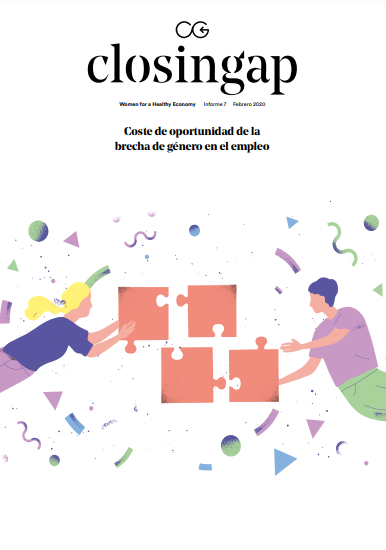

Gender gap in employment
Despite the fact that there are 5.4% more women of working age than men, the employment gap reached 12 points in 2018, with 10 women in work for every 12 men. In unemployment, the difference was 3.3 percentage points. In terms of the salary gap, women earn €5,784 less per year than men.
The ClosinGap study highlights the main factors behind the gender gap in employment, such as the interruption of work due to pregnancy or breastfeeding, gender differences in the choice of studies and professions, the late entry of women into the job market for historic reasons, the false joint responsibility in family and domestic roles, and other societal and cultural barriers.

Calculation of opportunity cost
The opportunity cost is the result of the under-representation of women in the labour market. The economic impact of the gender gap in employment exceeds €202 billion, equivalent to 16.8% of Spain’s GDP in 2018. If women were employed at the same rate as men, production would increase and 2.3 million jobs would be created.

The report reveals strategically important and large-scale data. The conclusions show the need for changes in employment to ensure equal opportunities in the labour market. Only then will we be able to use all female talent and reduce the enormous impact of this gap on the country as a whole.
Es necesario activar las cookies para ver este contenido